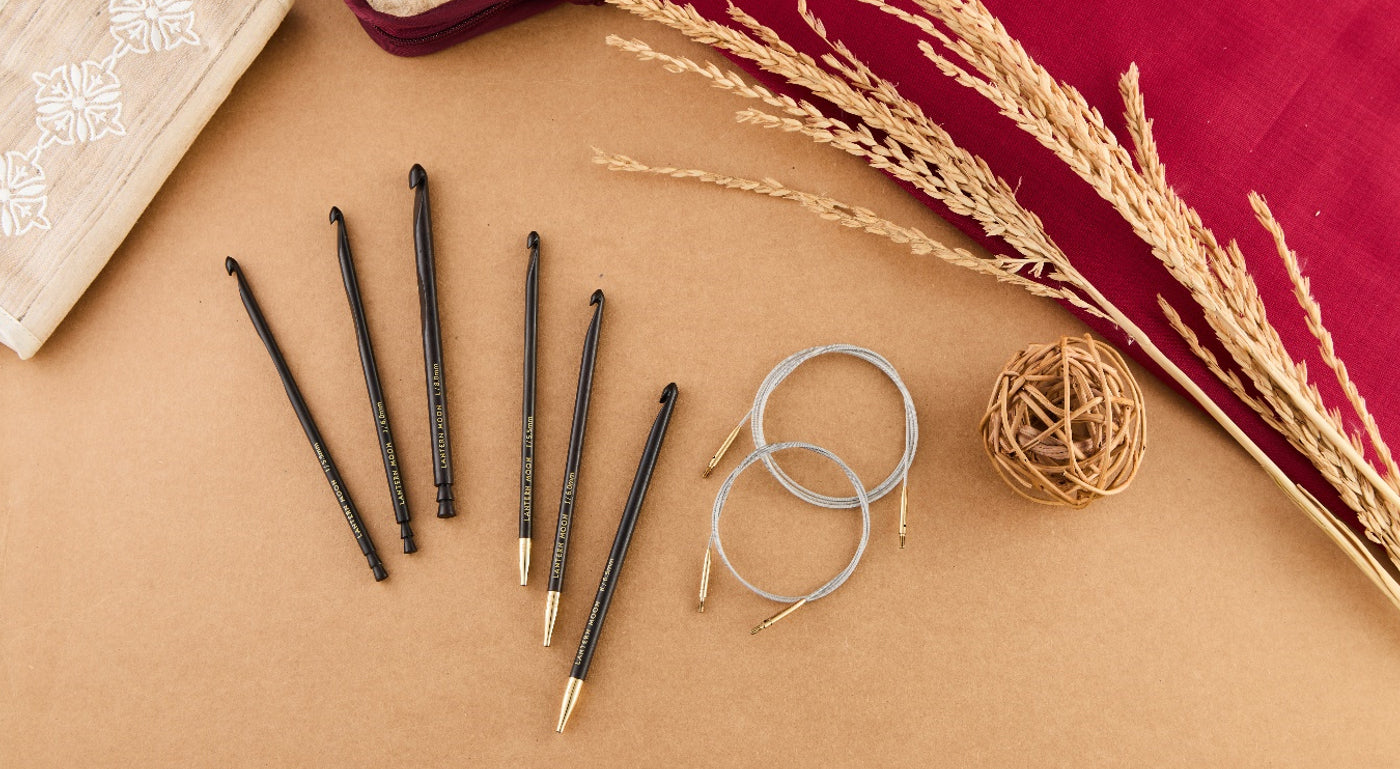
The Tunisian Crochet Chain Stitch is one of the fundamental techniques in Tunisian Crochet. Well, you must have heard or worked on a crochet chain in traditional crochet, the Tunisian counterpart is similar and when worked in rows or rounds create a gorgeously textured fabric. The Tunisian Chain Stitch is unique and versatile, loved for its smooth, braided appearance. Despite its simplicity, this stitch opens up a world of creative possibilities, making it an excellent choice for beginners and seasoned crocheters alike. It can be combined with other Tunisian stitches for an enhanced effect. In this blog we’ll walk you through the steps of how to crochet Tunisian Chain Stitch, its variations and common uses.
What is the Tunisian Chain Stitch?
The Tunisian Chain Stitch is a one of the basics or beginner-friendly stitches of Tunisian crochet. The technique combines the aesthetics of traditional crochet and knitting worked with crochet hooks to create a beautifully textured, braid-like appearance. Similar to all Tunisian crochet stitches, the chain stitch involves keeping multiple loops on the hook during the forward pass and then working them off in the return pass. The chain-like appearance adds structure and durability to the fabric, making it perfect for projects such as bags, belts, and garments that need a sturdy foundation. Similar to other Tunisian Stitches, measures need to be taken to balance the curling effect of the fabric made with Tunisian Chain Stitches.
Before getting started gather your crafting supplies.
- Tunisian crochet hooks – As the rule for Tunisian crochet goes, you will need a crochet hook. Interchangeable Tunisian crochet hooks are a good choice as you have the choice to change the cord length according to your project requirement. Lantern Moon offers choice of smooth ebony wood interchangeable Tunisian crochet hooks as well as the Bequest Set.
- Yarn – Choose yarn according to your project or you can practice with your stash. Forget the previously learned yarn rule for Tunisian crochet and make sure that the hook size is two sizes larger than the suggested size for matching yarn weight. For example, a DK weight yarn paired with 5-6mm hook size to balance out the curling nature of the stitch patterns of the Tunisian craft.
- Accessories – Keep accessories as finishing needles, stitch markers, scissors, measuring tape close at hand.
How to Make the Tunisian Chain Stitch: A Step-by-Step Guide
The Tunisian Chain Stitch is easy to make. Follow the steps and you’ll find yourself creating a braided fabric.
Step 1 - Make a Foundation Chain
Begin by making a standard foundation chain with as many stitches as needed for your project. For practice, start with 10-15 stitches.
Step 2 – Work on the Forward Pass
Insert the crochet hook into the second chain from the hook.
Yarn over and pull up a loop.
Repeat this step across the row, inserting the hook into each chain and pulling up a loop until you reach the end of the foundation chain. All loops should remain on the hook.
Step 3 – Work on the Return Pass
Yarn over and pull through the first loop on the hook. This is called a “chain-up” and counts as the first stitch.
Yarn over and pull through two loops at a time until only one loop remains on the hook. This is your completed return pass.
Step 4 – Repeat
For subsequent rows, work the forward pass by inserting the hook under the vertical bar of each stitch from the previous row, pulling up loops across.
Work a return pass as before.
Once you have reached your desired length, finish with a slip stitch in each vertical bar of the last row to bind off your work.
Tunisian Chain Stitch Variations
Though the basic Tunisian Chain Stitch is simple, there are a few ways to modify it to achieve different textures and effects:
- Extended Tunisian Chain Stitch adds extra height and dimension by chaining one after each stitch.
- Double Tunisian Chain Stitch creates a thicker, bolder chain effect by inserting the hook two rows below, then pulling up a loop, which gives the stitch extra depth.
- Crossed Tunisian Chain Stitch involves skipping one stitch and working into the next, then returning to work in the skipped stitch, creating a visually appealing twist.
These variations enhance the versatility of the stitch, making it suitable for everything from intricate designs to simple, durable foundations.
Projects Perfect for the Tunisian Chain Stitch

The Tunisian Chain Stitch works beautifully for projects requiring a firm base or decorative texture. Here are a few project ideas to showcase its unique properties:
- Scarves: Create a sturdy, warm scarf that retains its shape without excessive stretching.
- Bags and Pouches: With its tight structure, the Tunisian Chain Stitch makes for a solid base for bags, coin purses, and clutches.
- Home Décor: This stitch creates a wonderful texture for cushion covers, pot holders, and table runners that need to be both functional and decorative.
- Headbands and hats: The chain-like texture and firm fabric of this stitch make it perfect for snug, stretchy headbands that stay in place.
The Tunisian Chain Stitch is an ideal stitch to have in your crochet toolkit. With its straightforward technique and sturdy structure, it provides a great foundation for many projects and pairs well with more complex Tunisian stitches. Whether you’re creating a cozy scarf or a durable bag, this stitch will bring a unique, braided texture to your work.
If you're inspired to get started, pick up your Tunisian crochet hook and yarn and give the Tunisian Chain Stitch a try. Explore the Bequest set of Tunisian crochet hooks that can help bring your projects to life. Smooth ebony wood paired with 24K brass connectors and stainless-steel core nylon-coated cords create a smooth crafting experience. If you are new to the hybrid craft, here is our previous guide on traditional vs Tunisian crochet.
